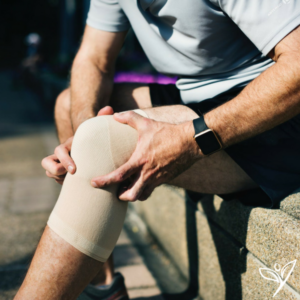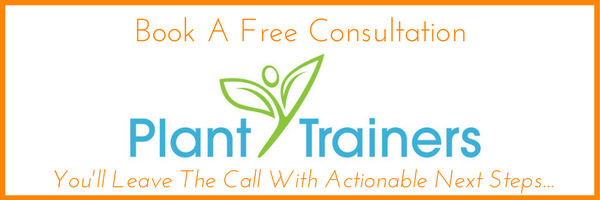These days anyone from the couch potato to the competitive athlete is looking for ways to reduce his or her risk of injury. While the couch potato doesn’t want to get hurt lifting the remote control, the truth is the couch potato (deep down inside) does really want to start moving his or her body. The concern is simply about getting injured. For those of you that fit in between these two extremes (meaning the average Jane and Joe who simply enjoy casual exercise), can benefit from these few tips that will help you reduce your risk of injury during your physical activity no matter what level of fitness you find yourself at today.
This list is very general and can be adapted for anyone in any phase of his or her level of physical activity. They are not in order of importance, yet based on your current lifestyle and needs, each person should focus in on whichever of these tips are lacking.
-
Enjoy Physical Activity The Smart Way
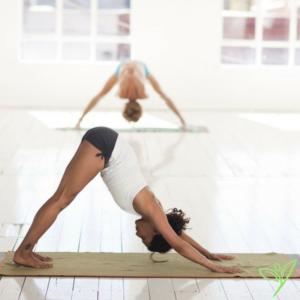
When we talk about physical activity, really the focus is on movement. No matter your current level of fitness, one thing we all need to do is get our bodies moving. From going for a short walk to pushing your limits on a long distance run or holding that yoga pose just a little bit longer, the bottom line is that we all need to keep moving. Our bodies were designed to move. In order to reduce your risk of injury, make sure movement is a regular part of your day.
Your bones, joints, and muscles will thank you as you age more gracefully because of your movement consistency over the years. If you haven’t been engaged in regular physical activity up to now, it isn’t too late to start! Be smart about it and take things slowly. Just because your friend is pumping 50-pound dumbbells, doesn’t mean you should be starting there. Work your way up slowly over time to produce the best results and in turn, that’ll limit the time you need to take off due to injury.
An easy way to incorporate physical activity into your day is to commute by bicycle. If you live near your workplace, you can ride a bike the whole way. Alternatively, you can ride an electric bicycle, or e-bike, to avoid overtaxing your body and arriving at work tired and sweaty. Cycling is a low-impact exercise, which means there is a low risk of bone and muscle strain, making it a suitable fitness activity for beginners and people of all ages.
-
Wear The Right Gear
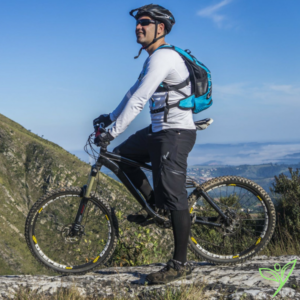 Depending on the type of movement you’re focusing on, gear can be rather important in helping you avoid injuries. Going for a walk or for a run, you guessed it, you’ll need adequate running shoes. The hand-me-downs from 20 years ago may fit snug and comfy, but they weren’t yours and will likely impede your progress. If you’re getting on a bike, you’ll need to invest in a helmet and some comfortable clothing specific to the sport. While you don’t need to go out and purchase the designer brands just to get moving, there are certain sports that you’ll want to have the right gear to help enable your progress and reduce your chances of blistering, chafing and potential injury.
Depending on the type of movement you’re focusing on, gear can be rather important in helping you avoid injuries. Going for a walk or for a run, you guessed it, you’ll need adequate running shoes. The hand-me-downs from 20 years ago may fit snug and comfy, but they weren’t yours and will likely impede your progress. If you’re getting on a bike, you’ll need to invest in a helmet and some comfortable clothing specific to the sport. While you don’t need to go out and purchase the designer brands just to get moving, there are certain sports that you’ll want to have the right gear to help enable your progress and reduce your chances of blistering, chafing and potential injury.
-
Stretching
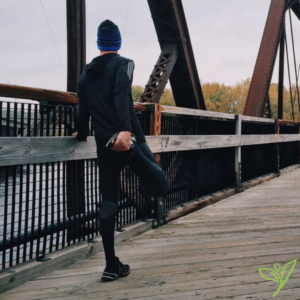 It’s been said quite often that stretching is something only for women. Couldn’t be further from the truth. Everyone needs to incorporate stretching into their daily routine. There are different methodologies for doing this and many debates on the benefits of stretching before or after exercise and doing dynamic or static stretching. More and more research is showing that dynamic stretching prior to exercise or movement is a great way to warm up your muscles and prepare them well for the movement that’s about to take place. Post-exercise stretching can be more static. Stretching at the end of your exercise session will allow you to lengthen your muscles a little more than you may have been able to earlier (as now they’re warmed up) which in turn will allow the increase of flexibility allowing your body to feel more mobile and agile for the next time around.
It’s been said quite often that stretching is something only for women. Couldn’t be further from the truth. Everyone needs to incorporate stretching into their daily routine. There are different methodologies for doing this and many debates on the benefits of stretching before or after exercise and doing dynamic or static stretching. More and more research is showing that dynamic stretching prior to exercise or movement is a great way to warm up your muscles and prepare them well for the movement that’s about to take place. Post-exercise stretching can be more static. Stretching at the end of your exercise session will allow you to lengthen your muscles a little more than you may have been able to earlier (as now they’re warmed up) which in turn will allow the increase of flexibility allowing your body to feel more mobile and agile for the next time around.
-
Cross-training
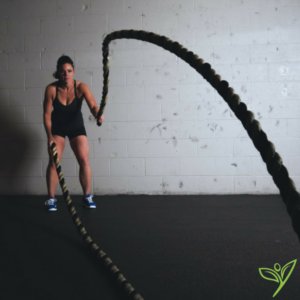 It’s been said time after time that if you’re a runner, run. If you’re a cyclist, bike. If you’re a swimmer, swim. Yes, of course, if you focus on one discipline, sport or activity you will get better at it and yes, you do need to train more in that area if that’s your area of competition. However, the body is designed to do incredible things and achieve the goals we push ourselves to achieve. As a triathlete, it is natural to train in three different sports and almost automatically the triathlete is cross-training.
It’s been said time after time that if you’re a runner, run. If you’re a cyclist, bike. If you’re a swimmer, swim. Yes, of course, if you focus on one discipline, sport or activity you will get better at it and yes, you do need to train more in that area if that’s your area of competition. However, the body is designed to do incredible things and achieve the goals we push ourselves to achieve. As a triathlete, it is natural to train in three different sports and almost automatically the triathlete is cross-training.
By implementing even more cross-training for the triathlete (like yoga for example), the directions of movement and flexibility in certain areas of the body gained through this other form of exercise will, in turn, make the body that much stronger and able to compete more successfully. This also allows the body to take a break from the repetitive motions of swimming, cycling and running to help reduce the risk of injury. As a beginner, try different forms of movement, don’t get stuck on doing the same thing everyday. The body adapts and needs a change from time to time.
-
Nutrition
 Nutrition is so important to reducing injuries and it doesn’t matter what level of fitness you are currently at. Food is very personal and we all enjoy eating the things we like to eat. Often we don’t consider the impact the food we put in our mouths really has on our body. So read this line again and again: The food you consume will directly either help to heal your body or it will hinder your progress. There is a direct relationship between what you eat, how you feel and how you perform.
Nutrition is so important to reducing injuries and it doesn’t matter what level of fitness you are currently at. Food is very personal and we all enjoy eating the things we like to eat. Often we don’t consider the impact the food we put in our mouths really has on our body. So read this line again and again: The food you consume will directly either help to heal your body or it will hinder your progress. There is a direct relationship between what you eat, how you feel and how you perform.
Eating an anti-inflammatory diet, such as eating more fruits and vegetables, will help your body recover faster from your exercise and enable you to get out there and do it again sooner. You’ll feel lighter, feel better, have more energy and sleep better too. Try this experiment: over the next few days, pay attention to how you feel after you eat. Note what foods make you feel good and what foods make you sluggish and heavy. It’s a fun experiment to do and you’ll learn a lot about yourself and your eating habits.
-
Rest Day
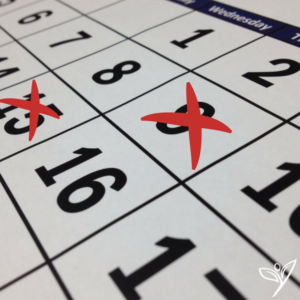 Everyone deserves a day off, in fact, everyone should take a day off from exercise here and there. Depending on your level of fitness and your goals, you’ll want to rest your body from your regular exercise schedule to allow time for recovery. Building a rest day into your schedule will be very helpful in making sure you actually take one. Once you start exercising or engaging in regular physical activity, you’ll learn how good it makes you feel and perhaps not want that rest day. Your rest day is just as important as your exercise days. Your muscles get stronger, grow and develop not while you’re exercising them, but while you’re resting. Take a day off and it’ll keep you fresh and help ensure you’re not over-training and putting yourself at risk of attracting injury.
Everyone deserves a day off, in fact, everyone should take a day off from exercise here and there. Depending on your level of fitness and your goals, you’ll want to rest your body from your regular exercise schedule to allow time for recovery. Building a rest day into your schedule will be very helpful in making sure you actually take one. Once you start exercising or engaging in regular physical activity, you’ll learn how good it makes you feel and perhaps not want that rest day. Your rest day is just as important as your exercise days. Your muscles get stronger, grow and develop not while you’re exercising them, but while you’re resting. Take a day off and it’ll keep you fresh and help ensure you’re not over-training and putting yourself at risk of attracting injury.
-
Quality Sleep
 Just like a rest day, sleep is vital to our recovery, performance, and development. Too many people are burning the candle at both ends, not getting enough quality sleep and wonder why they aren’t performing at their peak. Think about reducing screen time at least an hour before bed, don’t eat and drink too close to sleep time and make sure your room is dark. There is so much research on the importance of quality sleep available that more people need to really take this one seriously. If you get high-quality sleep, you’ll perform at everything through a higher vibration. Your quality of life will improve in every aspect, not just physical activity. Sleeping well allows you to stay healthier. Get good quality sleep, not just more of it.
Just like a rest day, sleep is vital to our recovery, performance, and development. Too many people are burning the candle at both ends, not getting enough quality sleep and wonder why they aren’t performing at their peak. Think about reducing screen time at least an hour before bed, don’t eat and drink too close to sleep time and make sure your room is dark. There is so much research on the importance of quality sleep available that more people need to really take this one seriously. If you get high-quality sleep, you’ll perform at everything through a higher vibration. Your quality of life will improve in every aspect, not just physical activity. Sleeping well allows you to stay healthier. Get good quality sleep, not just more of it.
No matter your current level of fitness, you are an athlete. You are capable of achieving anything you set your mind to achieve. If you doubt that or don’t believe it, look in the mirror and tell yourself you are an athlete because quite simply…you are. For more detailed information based on your individual situation, contact us and let us help you become the best version of yourself through physical activity.
